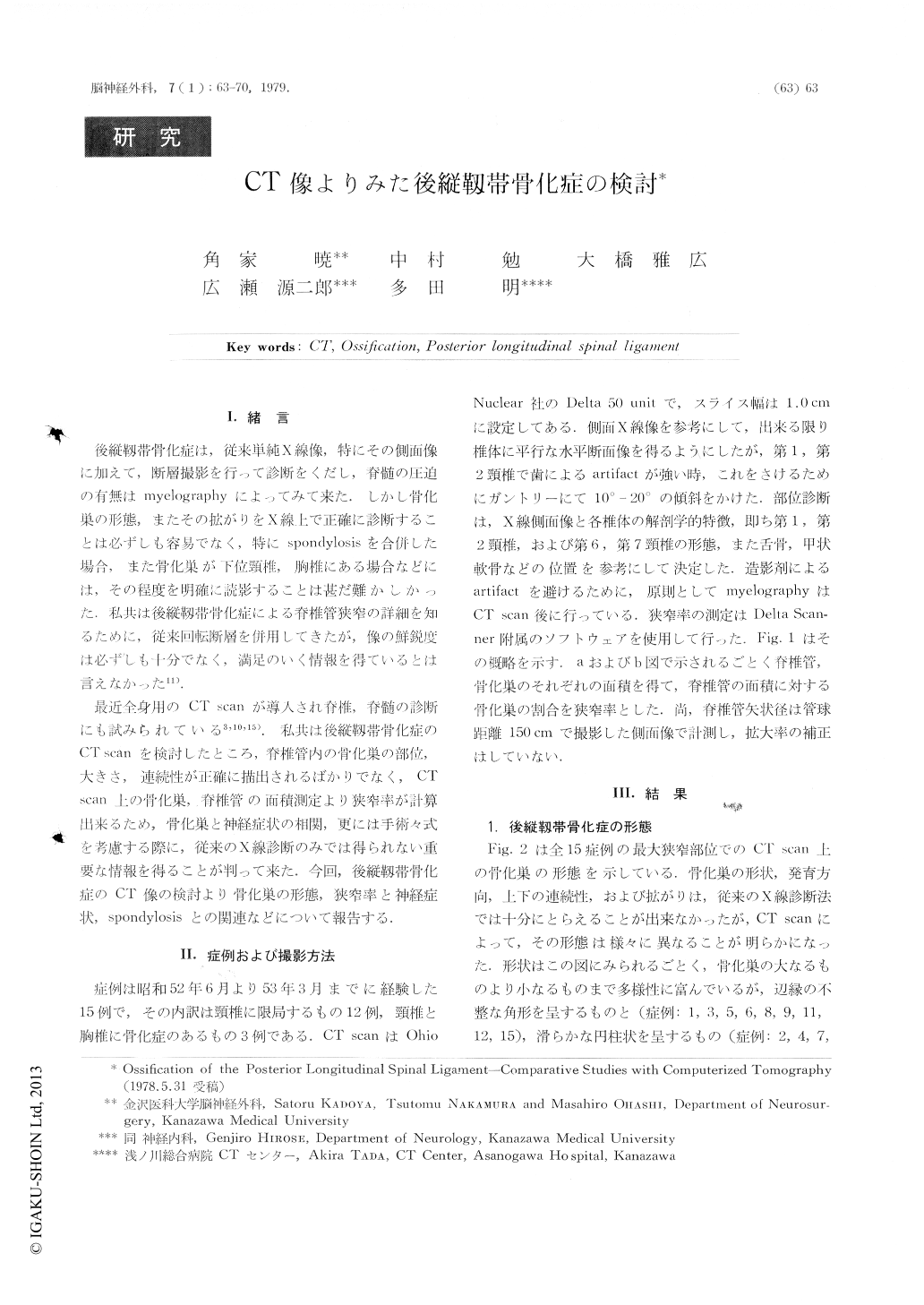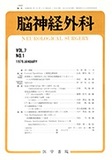Japanese
English
- 有料閲覧
- Abstract 文献概要
- 1ページ目 Look Inside
Ⅰ.緒言
後縦靱帯骨化症は,従来単純X線像,特にその側面像に加えて,断層撮影を行って言参断をくだし,脊髄の圧迫の有無はmyelographyによってみて来た.しかし骨化巣の形態,またその拡がりをX線上で正確に診断することは必ずしも容易でなく,特にspondylosisを合併した場合,また骨化巣が下位頸椎,胸椎にある場合などには,その程度を明確に読影することは甚だ難かしかった.私共は後縦靱帯骨化症による脊椎管狭窄の詳細を知るために,従来回転断層を併用してきたが,像の鮮鋭度は必ずしも十分でなく,満足のいく情報を得ているとは言えなかった11).
最近全身用のCT scanが導入され脊椎,脊髄の診断にも試みられている8,10,15).私共は後縦靱帯骨化症のCT scanを検討したところ,脊椎管内の骨化巣の部位,大きさ,連続性が正確に描出されるばかりでなく,CT scan上の骨化巣.脊椎管の面積測定より狭窄率が計算出来るため,骨化巣と神経症状の相関,更には手術々式を考慮する際に,従来のX線診断のみでは得られない重要な情報を得ることが判って来た.今回,後縦靱帯骨化症のCT像の検討より骨化巣の形態,狭窄率と神経症状,spondylosisとの関連などについて報告する.
Ossification of the posterior logitudinal spinal ligament (OPLL) was characterized by calcified logitudinal band along the posterior margin of vertebrae, but it has not been possible to know how the cord is compressed within the narrowed spinal canal. Our neuroradiological studies based on CT-view of the 15 cases of OPLL suffering from various degree of myelopathy revealed;
1) Computed tomography precisely delineated shape of OPLL, which was quite polymorphic, like mushroom, irregular cubic and round. OPLL ranged more than two vertebrae was not uniform, but exhibited different configuration at each level.

Copyright © 1979, Igaku-Shoin Ltd. All rights reserved.


